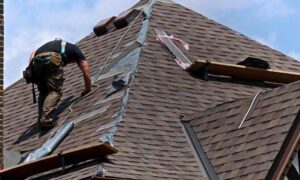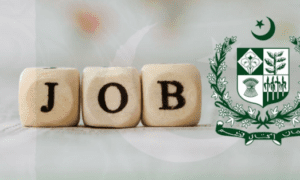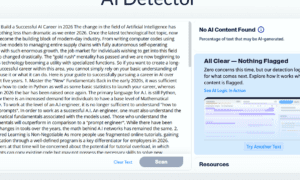A well-maintained roof not only enhances your home’s curb appeal but also prolongs its lifespan. Pressure Washing Summerville SC is an effective way to keep your roof pristine. Pressure washing can remove unsightly stains, moss, algae, and debris accumulating over time. However, it’s essential to approach this task cautiously, as improper pressure washing can cause damage to your roof and pose safety risks. Let’s explore some valuable tips and safety considerations for effectively and safely pressure washing your roof.
A. Assess the Roof’s Condition
Before you begin, it’s crucial to assess the condition of your roof. Check for any loose or damaged shingles, cracks, or leaks. Pressure washing can exacerbate existing problems, so address these issues beforehand or consult a professional roofer if necessary.
B. Gather the Right Equipment
To get started, you’ll need the appropriate equipment, including:
- Pressure Washer: Choose a pressure washer with adjustable pressure settings to ensure you can control the force of the water.
- Nozzle Tips: Use a wide-angle nozzle (40-60 degrees) to disperse the water evenly and reduce the risk of damaging the roof.
- Safety Gear: Wear appropriate safety gear, including gloves, safety glasses, and non-slip shoes. Consider a safety harness if working on a steep roof.
- Cleaning Solution: Select a roof-safe cleaning solution, typically one recommended by the manufacturer or a mixture of water and mild detergent.
- Extension Wand: An extension wand will help you reach higher areas without climbing on the roof.
C. Know the Right Pressure
The pressure setting on your pressure washer is critical. Too much pressure can damage shingles, while too little pressure won’t effectively clean the roof. Start with low pressure and gradually increase it until you achieve the desired results. Generally, a 1,200 to 1,500 PSI pressure is suitable for most roofs.
D. Maintain the Right Distance
Maintain a safe distance between the pressure washer nozzle and the roof surface. Typically, a distance of 6 to 12 inches is recommended. Be cautious not to get too close, as this can cause damage.
E. Use Proper Technique
Start by spraying from the top of the roof and work your way down. Always move in the direction of the slope, never against it. This helps prevent water from seeping under the shingles. Avoid staying in one spot for too long, as it can weaken or remove the protective granules on shingles.
F. Apply Cleaning Solution
Before pressure washing, apply the cleaning solution to the roof’s surface, following the manufacturer’s instructions. Allow it to sit for the recommended time to break down dirt and stains. This will make the pressure washing more effective.
G. Rinse Thoroughly
After Roof Cleaning Summerville SC thoroughly rinses the roof with clean water to remove any remaining cleaning solution and debris. Ensure all soap residue is gone to prevent future damage or staining.
H. Safety First
Safety is paramount when pressure washing a roof. If you’re not comfortable working on a roof, or if your roof has a steep pitch, consider hiring a professional. Always work with a buddy who can assist or call for help in an emergency.
I. Protect Surroundings
Cover and protect plants, shrubs, and other sensitive areas near the roof to prevent damage from the cleaning solution or high-pressure water.
J. Regular Maintenance
Regular maintenance is essential for the smooth operation, longevity, and safety of various systems, equipment, and structures, whether in your home, car, workplace, or any other environment. Here are some of the key benefits of regular maintenance:
- Extended Lifespan: Regular maintenance helps identify and address issues early, preventing them from becoming major problems. This extends the lifespan of equipment and structures, saving you money on replacement costs.
- Cost Savings: Preventive maintenance is often less expensive than major repairs or replacements. Promptly addressing minor issues can prevent them from developing into costly emergencies.
- Improved Efficiency: Maintained equipment and systems tend to operate more efficiently. For example, a well-maintained HVAC system consumes less energy, reducing utility bills.
- Safety: Maintenance can identify and address safety hazards. For example, in the context of vehicles, regular maintenance checks can ensure that brakes, tires, and other critical components are in good condition, reducing the risk of accidents.
- Reduced Downtime: Regular maintenance minimizes unexpected breakdowns, reducing downtime for equipment or systems. This is crucial for businesses where downtime can result in lost productivity and revenue.
- Optimal Performance: Well-maintained equipment and systems perform at their best, delivering the intended performance and functionality. This is important for quality control and consistency.
- Compliance: Certain equipment and facilities may have legal or regulatory requirements for maintenance. Regular upkeep ensures you remain compliant with these regulations, avoiding potential fines or legal issues.
- Higher Resale Value: Whether it’s a vehicle, a home, or industrial machinery, well-maintained assets generally have a higher resale value. Buyers will pay more for equipment or property with a documented maintenance history.
- Environmental Benefits: Efficiently running equipment consumes fewer resources and generates fewer emissions. Regular maintenance contributes to a more sustainable and environmentally friendly operation.
- Peace of Mind: Knowing that your systems, equipment, and structures are well-maintained can provide peace of mind. You can trust that they will perform reliably when needed, reducing stress and worry.
- Improved Comfort and Quality of Life: Regular home maintenance can improve comfort and living conditions. For example, servicing your heating system ensures a warm and cozy house during winter.
- Preservation of Assets: Maintenance helps preserve the appearance and functionality of assets. For example, regular painting and upkeep of a house’s exterior protect it from weather damage.
- Avoiding Catastrophic Failures: In some cases, a lack of maintenance can lead to catastrophic failures, such as a burst pipe in a home. Regular inspections and maintenance can catch these issues before they escalate.
- Health Benefits: Maintenance can improve indoor air quality and a healthier living or working environment. Cleaning and maintaining HVAC systems can reduce allergens and improve respiratory health.
Pressure washing your roof can be an effective way to maintain its appearance and extend its lifespan. However, it’s crucial to approach this task cautiously and follow these safety considerations and tips to ensure a successful and safe cleaning process. When done correctly, pressure washing can rejuvenate your roof, enhancing the beauty and value of your home.



































